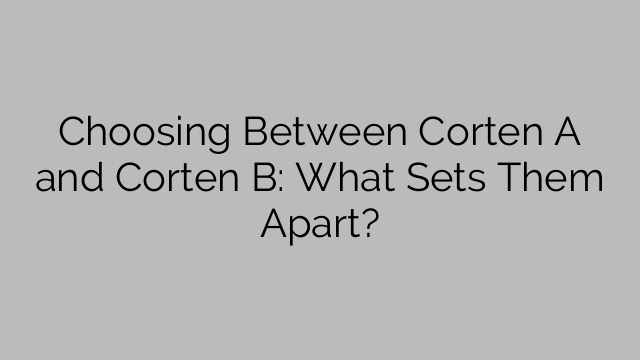Corten A and Corten B are both types of weathering steel, which refers to a group of steel alloys that have enhanced resistance to atmospheric corrosion when exposed to the elements. This is achieved through the addition of alloying elements, primarily copper, chromium, nickel, and phosphorus, which form a protective rust-like coating on the surface of the steel.
One of the main differences between Corten A and Corten B is the chemical composition. Corten A is primarily composed of iron, with small amounts of copper, chromium, nickel, and phosphorus. On the other hand, Corten B has a slightly different composition, with increased amounts of copper and phosphorus. The higher copper content in Corten B provides improved corrosion resistance, especially in environments with high acidity or chloride content.
Another significant factor to consider when choosing between Corten A and Corten B is the mechanical properties. Corten A has a higher tensile strength and yield strength compared to Corten B, making it suitable for structural applications that require higher strength. On the other hand, Corten B offers greater toughness and formability, making it more suitable for applications where bending, shaping, or welding is required.
When it comes to aesthetic considerations, both Corten A and Corten B offer a distinct rusty appearance, which is highly valued for architectural and decorative purposes. This weathered patina not only adds character and visual appeal but also acts as a protective layer against further corrosion, reducing the need for maintenance and painting. However, it’s important to note that the patina develops over time, and the speed at which it forms depends on the environmental conditions the steel is exposed to.
Choosing between Corten A and Corten B ultimately depends on the specific requirements of the project. If structural strength is a priority, Corten A may be the better choice. Conversely, if toughness and formability are more important, Corten B might be the preferred option. Additionally, considering the environmental conditions, such as acidity or chloride content, can help determine whether the improved corrosion resistance of Corten B is necessary.
In conclusion, both Corten A and Corten B are excellent choices for projects that require weathering steel’s unique properties. By understanding their individual differences in terms of chemical composition, mechanical properties, and corrosion resistance, it becomes easier to select the most suitable material for a particular application. Whether it’s for a structural project or an architectural design, the choice between Corten A and Corten B can significantly impact the performance and longevity of the final product.
[ad_2]

